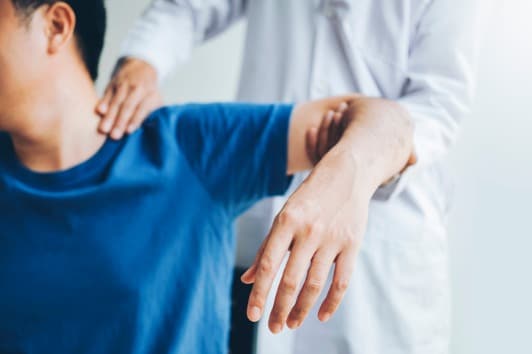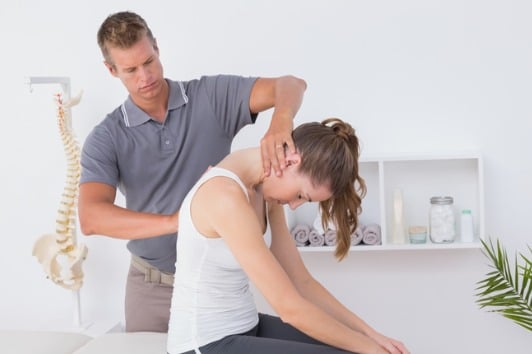Temporomandibular Joint Disorders (TMJ)
Understanding the Symptoms, Causes & Treatments for TMJ
Reviewed by: Dr. Niteesh Bharara, Dr. Yash Mehta, Larry Grine, MSPT
What are TMJ Disorders?
Temporomandibular joint disorders affects the Temporomandibular Joint (TMJ). Those who suffer with TMD tend to have pain and discomfort with their jaw, as well as the area surrounding it. They can also have limited movement of their jaw, and a possible clicking sound coming from their jaw.
The temporomandibular joint (TMJ) is located where your jawbone attaches to your skull. A cartilage disc, called the articular disc, sits between where the two bones meet. This disc slides as your jaw is in motion, allowing your jawbone to move like a sliding hinge.
To support the large bones and cartilage disc, several muscles and ligaments attach near your TMJ. This allows your body to use your jaw frequently throughout the day for chewing, talking, eating, and swallowing.


Symptoms of TMJ Disorders:
- Pain & clicking jaw
- Headaches (typically in occipital region)
- Tightness of the neck
- Retracted mandible
- Tilted neck
- Shoulders being off balanced
When to Seek Treatment for TMJ
If you’re noticing symptoms associated with TMJ disorders and suspect an issue, it’s crucial to consider consulting a specialist in order to obtain an accurate diagnosis and timely treatment. Early intervention can significantly improve your overall well-being and provide a broader range of treatment options, which may decrease as symptoms persist. The key to a successful and speedy recovery lies in addressing the root of the pain with your specialist as soon as symptoms arise.
While many people experience day-to-day pain, dismissing it as soreness, this may not be the case for everyone. If your pain persists for more than 10 days, it should be taken more seriously. Evaluate such prolonged pain with a specialist to identify the root issue and determine the appropriate treatment. Additionally, be attentive to other signs related to pain that should not be ignored, including pain accompanied by fever, pain associated with loss of bladder control, and weakness/tingling/numbness in your arms or legs.
It’s important to note that these are general guidelines based on our expertise over the past three decades, recognizing that each patient’s symptoms may be unique.


Common Causes of TMJ Disorders
TMJ disorders tend to be caused by an injury, genetics, arthritis, poor posture, neck issues, poor body alignment, or a combination of those factors. Some people who grind or clench their teeth can also develop TMJ, as well as those with forward head posture.
Diagnosing TMJ Disorders
TMJ disorders will be diagnosed by your doctor and/or dentist based on your symptoms and history. We’ll work with your doctor and/or dentist to ensure you have an integrated care team all working together to develop your personalized plan of care.


Treatment Options for TMJ Disorders
After the initial evaluation, a plan of care will be developed. The goal for TMJ therapy is to decrease the amount of pain the patient is in, while also improving the patient’s function of their TMJ. During your length of treatment your physical therapist will incorporate a multitude of interventions into your sessions, as well as exercises for at home:
- Manual physical therapy
- Stretches
- Functional exercises specifically tailored to the patient
- Dry Needling
- Regenerative Medicine

